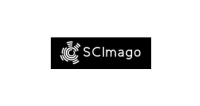HASTE INTRAMEDULAR DE POLIPROPILENO, COMBINADA OU NÃO A BIOMATERIAIS, NO TRATAMENTO DE FRATURAS INDUZIDAS NO ÚMERO DE POMBOS
DOI:
https://doi.org/10.5380/avs.v9i1.4048Palavras-chave:
fratura, pombos, tratamento, cirurgia, ortopedia, fracture, pigeons, treatment, surgery.Resumo
O trabalho teve por objetivo avaliar a utilização da haste intramedular de polipropileno, combinada ou não a biomateriais de origem bovina, no tratamento de fraturas transversas induzidas no terço médio do úmero direito de pombos-domésticos. No grupo I (n=7), a fratura foi estabilizada por meio de haste intramedular de polipropileno aplicada em ambos os fragmentos da fratura, sem ultrapassar as articulações. No grupo II (n=7) utilizou-se a mesma fixação, porém foi aplicado junto ao foco de fratura uma mistura de biomateriais, constituída de proteínas morfogenéticas do osso e aglutinante de colágeno liofilizado. Em ambos os grupos, a asa foi imobilizada junto ao corpo com bandagem em forma de 8 por um período de 30 dias. Com seis semanas de pós-operatório, cinco fraturas do grupo I e quatro do grupo II estavam totalmente consolidadas. Foram observadas uma não consolidação hipertrófica (grupo I) e duas não consolidações com deslocamento do eixo ósseo (grupo II). Exceto as três aves que apresentaram complicações nas fraturas, as demais recuperaram a capacidade de vôo. Foi possível concluir que a haste intramedular de polipropileno foi um método de imobilização de eficácia limitada e os biomateriais utilizados não estimularam a consolidação das fraturas.
Use of polypropylene intramedullary rod alone or combined with biomaterials for treatment of induced humeral transverse fractures in pigeons
Abstract
The aim of this study was to evaluate a polypropylene intramedullary rod alone or combined with biomaterials from bovine origin for the treatment of transverse fractures induced in the midshaft of right humerus in pigeons. In group I (n=7) the fracture was immobilized using a polypropylene intramedullary rod inserted into both fractured extremities without entering the joints. The same device was used in group II (n=7). Additionally, the fractured site in group II animals received a mixture of biomaterials composed by bone morphogenetic proteins and lyophilized collagen. In both groups a cast was applied to the affected wing, which was immobilized with a figure-of-8 bandage applied to the body and wing during 30 days. Complete healing was observed after six weeks of surgery in five and four animals from groups I and II, respectively. Observed complications included one hypertrophic nonunion (group I) and two nonunion with bone shaft dislocation (group II). Except for the three pigeons that showed postoperative complications, the remaining animals recovered the ability of flight. It was possible to conclude that the polypropylene intramedullary rod is a limited method of immobilization and the biomaterials used in this study did not stimulate fracture healing.
Downloads
Como Citar
Edição
Seção
Licença
Autores que publicam nesta revista concordam com os seguintes termos:
- Autores mantém os direitos autorais e concedem à revista o direito de primeira publicação, com o trabalho simultaneamente licenciado sob a Creative Commons - Atribuição 4.0 Internacional que permite o compartilhamento do trabalho com reconhecimento da autoria e publicação inicial nesta revista.
- Autores têm autorização para assumir contratos adicionais separadamente, para distribuição não-exclusiva da versão do trabalho publicada nesta revista (ex.: publicar em repositório institucional ou como capítulo de livro), com reconhecimento de autoria e publicação inicial nesta revista.
- Autores têm permissão e são estimulados a publicar e distribuir seu trabalho online (ex.: em repositórios institucionais ou na sua página pessoal) a qualquer ponto antes ou durante o processo editorial, já que isso pode gerar alterações produtivas, bem como aumentar o impacto e a citação do trabalho publicado.













